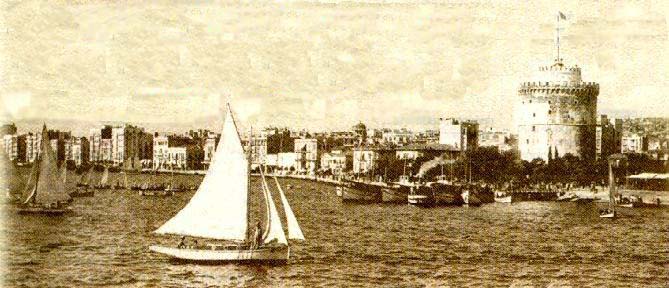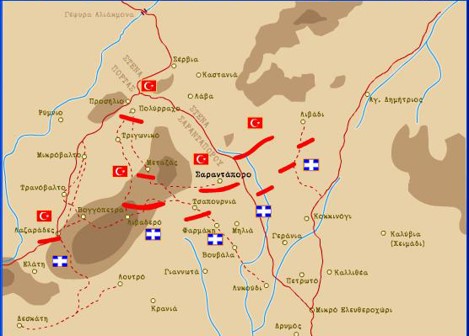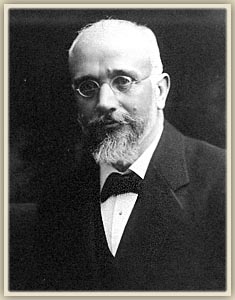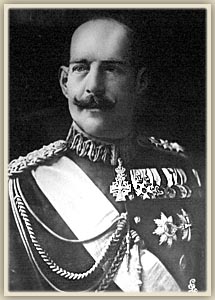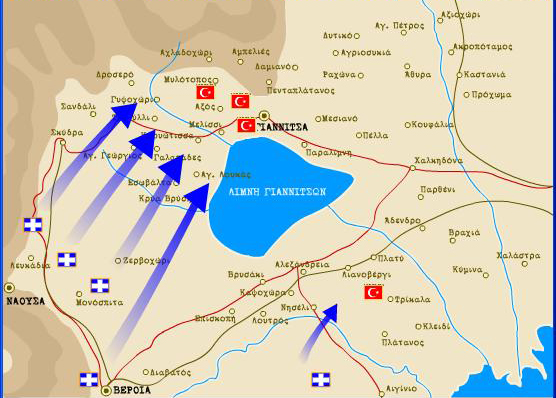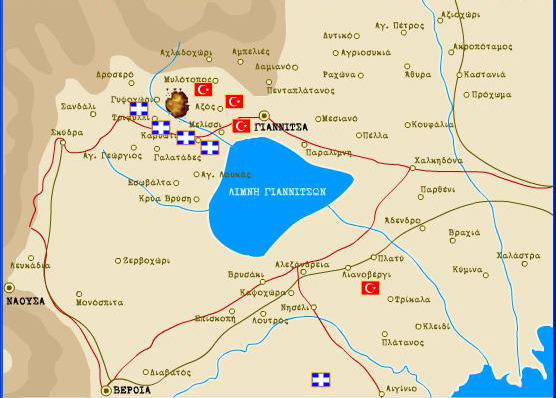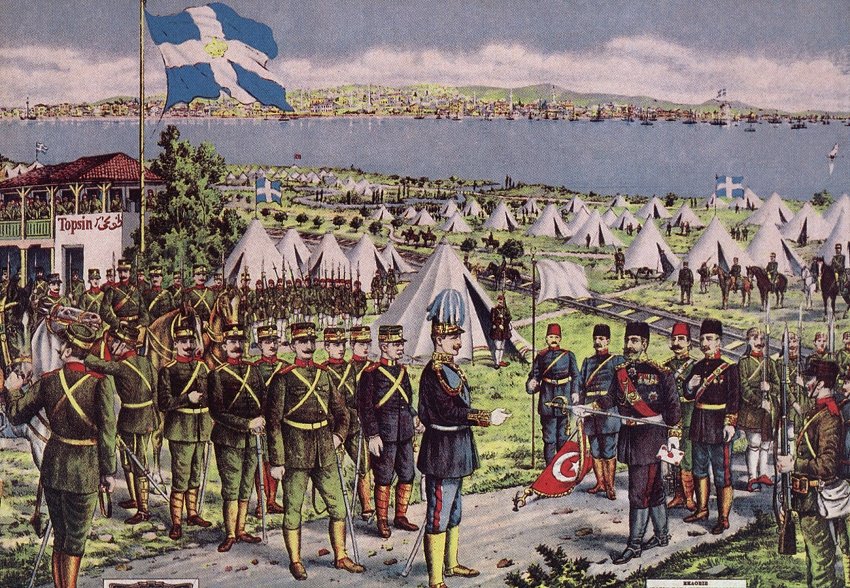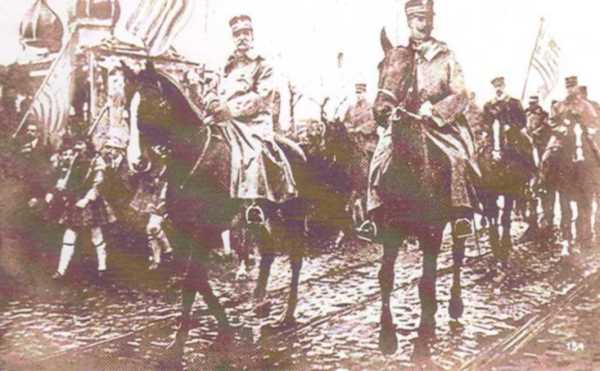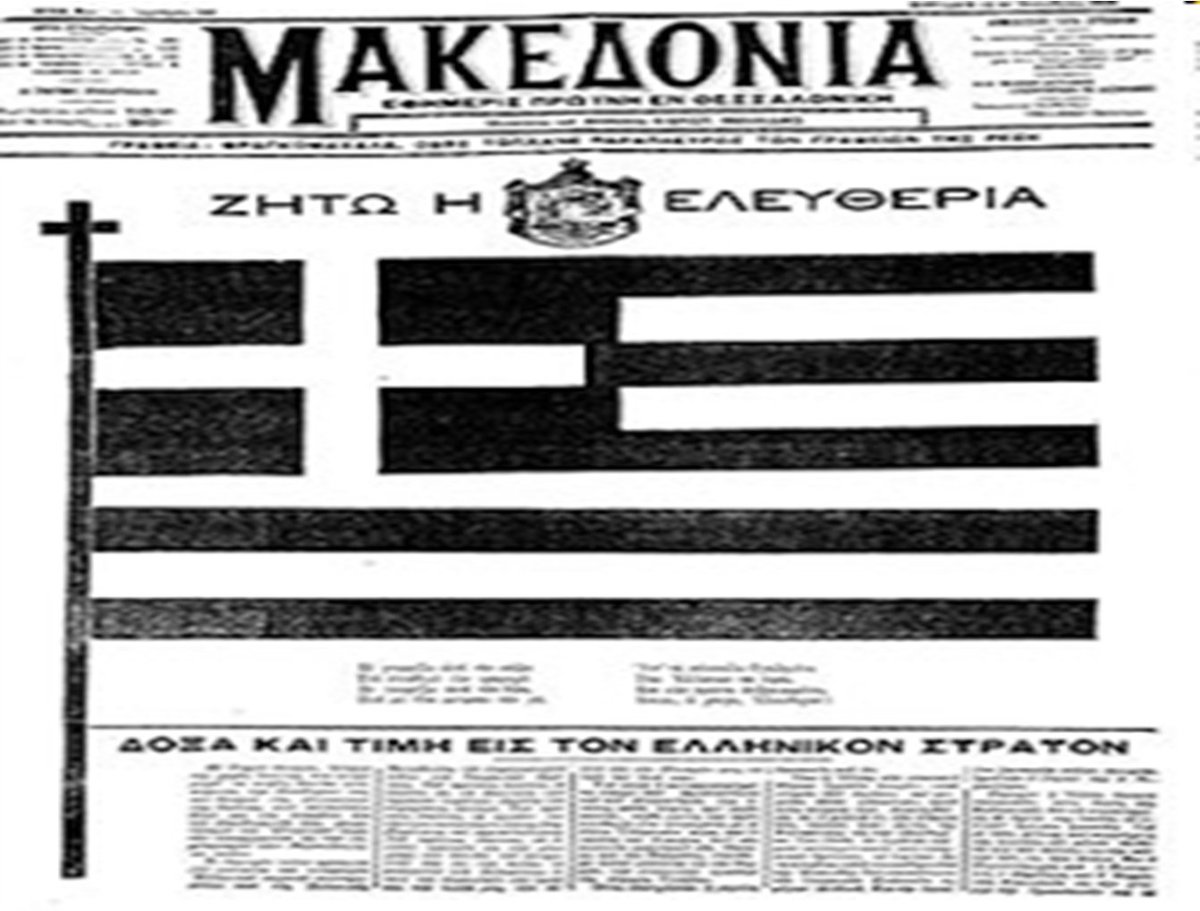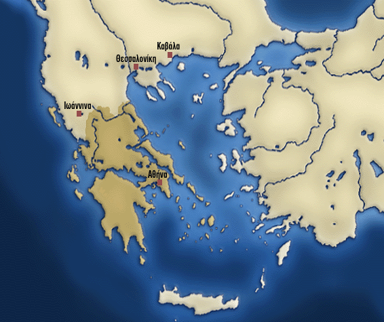The city I was born, raised and live up today, Thessaloniki, is celebrating today 108 years of its liberation from the Ottomans. Let me briefly introduce you to the days that changed the course of the cities history
The 1st Balkan War(Oct. 1912-May 1913)involved actions of the Balkan League (Bulgaria, Serbia, Greece & Montenegro) against the Ottomans, who lost 83% of their European territories. (A Danish cartoon of that time shows the struggle of the league)
The armies of Serbia and Montenegro gathered in northern Macedonia and Albania, while Greeks took over the fronts of southern Macedonia and Epirus. The Bulgarians, in turn, were placed in the Thrace region, but their plan was to move into Macedonia & take over Thessaloniki.
The Greek army moved towards Elassona and the crossings of Olympus and two days later scored its first victory by taking over Sarantaporo. With the Turks retreating, Greek forces began to advance from Kozani, Grevena, and Katerini.
The Greek Army did not move north to Monastiri (today Bitola) as initially planned.Venizelos realized that Greece was in danger of losing Thessaloniki by the Bulgarian army. So, the Hellenic Army with Commander the Crown Prince Constantine changed course to the east.
Eleftherios Venizelos and the Prince of the throne Konstantine, the two protagonists of the 1st Balkan war in Greece
On its way the army had to go through Giannitsa, a holy city for the Muslims. 5 Greek army divisions and 1 cavalry brigade collided with 6 Turkish artillery units and 5 divisions. A two-day battle followed on October 19-20 with many losses on both sides.(city & lake of Giannitsa)
In order to delay the Greek army(blue arrows) the Turks destroyed the bridges at Loudias, Axios & Gallikos rivers. At the same time, a Bulgarian division had entered the plain of Langada, near Thessaloniki (orange arrows).
With the help of local residents from the surrounding areas(Malgara, Kymina, Chalastra, Sindos) a makeshift bridge was build over night on October 25, with materials from small boats, carts, barrels. The Greek army crossed the Axios river and prepared to attack Thessaloniki.
Once the Greek army was outside Thessaloniki and asked for surrender, Tahsin Pasha proposed the conditional transition of the city to Greek control. Instead, Constantine granted the Turks time, until the dawn of Oct. 26 for the transfer of Turkish officers to Asia Minor
The Turks responded positively, but asked to take 5,000 arms, something that Constantine rejected. The deadline for the final agreement was extended. When the new deadline passed, the Greek army was ready to attack. Tahsin Pasha accepted the terms in village Topsin (today Gefyra)
On the evening of October 26, 1912, the day of the feast of the patron saint of Thessaloniki, St. Dimitrios, the city was liberated by the Greek army, just a few hours before Bulgarian forces were to arrive.
«Η σημαία μας πρωτοϋψώθηκε στο Λευκό Πύργο εκείνη την ημέρα το πρωί την ώρα ακριβώς που έρχονταν απ& #39; τον παραλιακό δρόμο η παρέλασις της νίκης. Τα κανόνια στημένα κοντά, χαιρετούσαν με πυροβολισμούς, τα καράβια στο λιμάνι σφύριζαν όλα μαζί και έφιπποι προπορεύουνταν του στρατού
ο βασιλεύς Γεώργιος, ο Διάδοχος και το Επιτελείο. Ο κόσμος που είχε ξεχυθή στους δρόμους ζητωκραύγαζε έξαλλος και πολλά μάτια δάκρυσαν από συγκίνησι».
Αλέξανδρου Δ. Ζάννα, «Ο Μακεδονικός Αγών. Αναμνήσεις». Απομνημονεύματα, Θεσσαλονίκη 1984
Αλέξανδρου Δ. Ζάννα, «Ο Μακεδονικός Αγών. Αναμνήσεις». Απομνημονεύματα, Θεσσαλονίκη 1984
The Balkan wars museum in village Gefyra today exhibits military uniforms, pistols and revolvers of the Greek army, medals, Turkish, Serbian and Romanian war relics, paintings, furniture and household utensils. In the courtyard there is a burial monument to Hasan Tahsin Pasha

 Read on Twitter
Read on Twitter